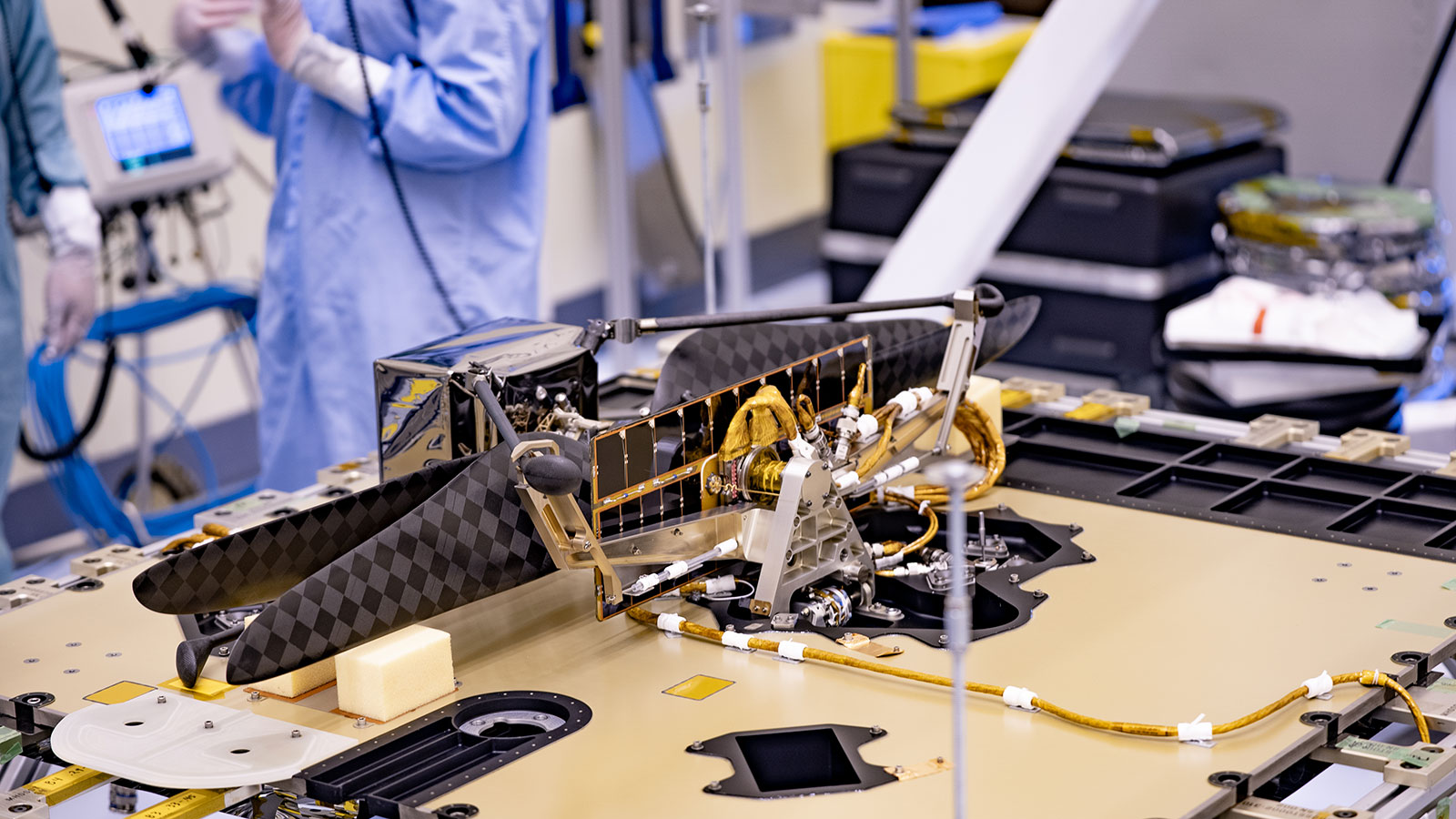Trailblazing Mars helicopter attached to Perseverance rover for July launch

The newest Mars rover's pioneering passenger has come aboard.
Technicians attached the first-of-its-kind Mars Helicopter to the belly of NASA's Perseverance rover on Monday (April 6) at the agency's Kennedy Space Center in Florida, where the robot is being prepped for its upcoming launch. That liftoff will take place during a three-week window that opens on July 17.
Prep work on the rover is officially in high gear. For example, over a four-day span in late March, mission team members finished installing Perseverance's parachute system and also put on the robot's six wheels.
More: NASA's Mars 2020 rover Perseverance in pictures

Perseverance's descent stage was also fueled up last weekend, just before the helicopter integration, NASA officials said.
The descent stage is the rocket-powered sky crane that will lower Perseverance onto the Martian dirt via cables in February 2021. Gassing up the crane was no trivial task; the craft's four tanks hold a total of 884 lbs. (401 kilograms) of hydrazine propellant, agency officials said.
"The last hundred days before any Mars launch is chock-full of significant milestones," David Gruel, the Mars 2020 assembly, test and launch operations manager at NASA's Jet Propulsion Laboratory (JPL) in Pasadena, California, said in a statement. (JPL built Perseverance and is the lead center for the rover's mission, which is called Mars 2020.)
Breaking space news, the latest updates on rocket launches, skywatching events and more!
"Fueling the descent stage is a big step," Gruel added. "While we will continue to test and evaluate its performance as we move forward with launch preparations, it is now ready to fulfill its mission of placing Perseverance on the surface on Mars."
That placement will occur inside Jezero Crater, a 28-mile-wide (45 kilometers) hole in the ground that hosted a lake and a river delta in the Red Planet's ancient past. Perseverance will hunt for signs of long-dead Martian life, characterize the region's geology and perform a number of other tasks, chief among them collecting and caching samples for a future return to Earth.
The Mars 2020 mission will also demonstrate several new technologies, including an instrument that will generate oxygen from the carbon-dioxide-dominated Martian atmosphere and the 4-lb. (1.8 kg) Mars Helicopter, which will be the first rotorcraft ever to ply the skies of a world beyond Earth.
If all goes according to plan, the helicopter will be deployed in May 2021, 2.5 months after Perseverance's touchdown. The little solar-powered chopper will then conduct a series of short flights during a test campaign that will last up to 30 days.
The Mars Helicopter won't gather any scientific data during these excursions; it carries no instruments. But a successful test campaign could pave the way for extensive aerial exploration of the Red Planet in the not-too-distant future, mission team members have said.
- Mars 2020: The Red Planet's next rover
- Meet 'Perseverance': NASA's Mars 2020 rover has a new name
- Photos: Ancient Mars lake could have supported life
Mike Wall is the author of "Out There" (Grand Central Publishing, 2018; illustrated by Karl Tate), a book about the search for alien life. Follow him on Twitter @michaeldwall. Follow us on Twitter @Spacedotcom or Facebook.
OFFER: Save 45% on 'All About Space' 'How it Works' and 'All About History'!
For a limited time, you can take out a digital subscription to any of our best-selling science magazines for just $2.38 per month, or 45% off the standard price for the first three months.

Michael Wall is a Senior Space Writer with Space.com and joined the team in 2010. He primarily covers exoplanets, spaceflight and military space, but has been known to dabble in the space art beat. His book about the search for alien life, "Out There," was published on Nov. 13, 2018. Before becoming a science writer, Michael worked as a herpetologist and wildlife biologist. He has a Ph.D. in evolutionary biology from the University of Sydney, Australia, a bachelor's degree from the University of Arizona, and a graduate certificate in science writing from the University of California, Santa Cruz. To find out what his latest project is, you can follow Michael on Twitter.

